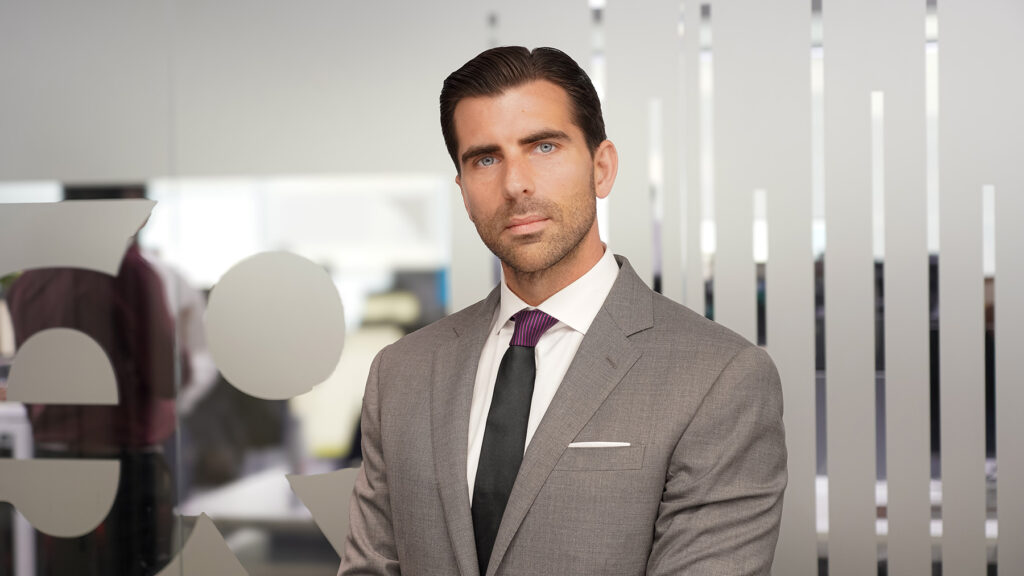
Engineering Journey & Professional Expertise
Tell us a bit about your journey—what inspired you to pursue a career in engineering, and how has your path evolved over the years?
From an early age, I found myself deeply fascinated by both the visual arts and the built environment. I admired how art could communicate ideas, evoke emotion, and leave a lasting impact. However, I was equally intrigued by the technical precision and functional beauty of engineering. Over time, I came to appreciate that engineering was not in conflict with artistic expression—but rather a vehicle through which creative ideas could be brought to life at scale. Engineering offered a structured yet imaginative pathway to realise tangible outcomes from abstract concepts, allowing for innovation that directly influences how people live, interact, and experience the world around them.
My professional journey has been marked by a constant drive to merge creativity with precision. I’ve had the privilege to work on several transformative projects that span continents and sectors, each helping to shape my technical skills and leadership philosophy. This evolution has strengthened my conviction that engineering is as much about human experience as it is about structural integrity or technical solutions.
Are there any standout projects or milestones that have significantly shaped your career to date?
There have been several pivotal moments, but two projects in particular stand out for the profound impact they had on both my personal and professional growth. The first was the Titanic Signature Museum in Belfast—an architectural and cultural landmark within my home city. Being part of a team that delivered such a symbolically rich and technically ambitious structure was a source of immense pride. The project was not only a feat of engineering but also a contribution to the city’s global identity.
The second was my involvement in the Cleveland Clinic Abu Dhabi. Witnessing this project evolve from a concept design—led from the UK—into a fully realised, state-of-the-art medical facility in the UAE capital was an extraordinary experience. It provided a comprehensive view of the design and construction process on an international scale and underscored the importance of interdisciplinary coordination and cross-cultural collaboration.
The Middle East is home to some of the world’s most ambitious engineering projects. What draws you to this region professionally, and what excites you most about working here?
The Middle East continues to be a global epicentre for bold, boundary-pushing engineering projects. What truly draws me to this region is its appetite for innovation and its ability to embrace complex challenges as opportunities for transformation. There is a unique culture of excellence here—a convergence of global talent, progressive leadership, and a vision for the future that dares to defy convention.
Professionally, it’s exhilarating to work in an environment where no idea is too ambitious, and where projects often serve as prototypes for the cities of tomorrow. The commitment to sustainability, smart infrastructure, and architectural innovation creates a stimulating atmosphere for engineers who want to be at the forefront of change. It’s this dynamic energy, and the opportunity to contribute meaningfully to transformative projects, that makes working in the region so rewarding.
Joining 9E Global & Industry Impact
What motivated you to join 9E Global, and how do you see your role contributing to the company’s growth in the region?
My decision to join 9E Global was driven by a shared commitment to engineering excellence and technological innovation. I’ve long been passionate about integrating cutting-edge processes and tools into our daily project workflows to deliver better, faster, and more sustainable outcomes. Through my research and industry networks, it became clear that 9E Global was not only aligned with this vision, but actively pushing the boundaries of what’s possible across a wide spectrum of projects.
With over 17 years of experience in engineering, particularly in delivering hospital turnkey solutions, I see my role as a strategic enabler—someone who can bring industry expertise, technical leadership, and collaborative energy to further diversify our project portfolio. In particular, I’m eager to help expand the company’s presence in the healthcare sector by leveraging my domain knowledge and experience delivering complex, critical infrastructure projects.
How does 9E Global align with your professional ambitions and expertise?
9E Global is at a pivotal point in its growth trajectory, and it’s inspiring to be part of an organisation that places equal importance on ambition, execution, and people development. I’ve been entrusted to lead a diverse, multinational team—an opportunity that not only reflects the company’s trust in its people, but also its commitment to nurturing a high-performance culture rooted in mutual respect and continuous learning.
The company fosters an environment where engineers are encouraged to challenge norms, explore new technologies, and pursue their personal ambitions within the context of collective success. This alignment between professional values and organisational culture is rare, and it’s what makes 9E Global such an exciting place to build the next chapter of my career.
What are some of the most exciting projects or challenges you anticipate working on in your new role?
The breadth of 9E Global’s project portfolio is both impressive and inspiring. We are currently engaged in a number of large-scale initiatives that span residential, commercial, cultural, and institutional sectors. One particularly exciting opportunity, which for the moment has to remain confidential, is a monumental undertaking that will challenge us to apply engineering ingenuity in new and innovative ways.
Looking ahead, I’m also particularly excited about contributing to the development of off-grid, self-sustaining buildings. These types of projects demand a high level of interdisciplinary collaboration and push the boundaries of current engineering practices, particularly around energy use, water management, and material selection. They are emblematic of where the industry is headed, and I’m thrilled to be part of a team that is not just responding to these trends, but actively shaping them.
Engineering Challenges & Regional Trends
From your perspective, what are some of the most pressing challenges facing engineers in the Middle East today?
One of the most pressing challenges we face is balancing the region’s rapid pace of development with long-term sustainability goals. While the Middle East is renowned for its visionary projects, it is equally critical to ensure that these developments are environmentally responsible, energy-efficient, and future-proof. This means integrating sustainability from the earliest design stages and ensuring that innovation is both technologically and ecologically sound.
On a more granular level, I believe there is a significant opportunity—and responsibility—to support the next generation of engineers. Empowering young professionals to think differently, explore new design philosophies, and remain passionate about lifelong learning is vital. Encouraging mentorship, fostering curiosity, and maintaining a culture of continuous improvement will be key to ensuring that the engineering profession continues to thrive in this region.
With the region’s push towards sustainability and smart infrastructure, how do you see engineering contributing to these critical goals?
Engineers are at the very heart of the region’s transition towards a more sustainable and technologically integrated future. The convergence of environmental responsibility with digital transformation presents a rare opportunity for engineers to rethink how cities and systems function.
We must take a proactive role in advising clients to adopt smart technologies—not as novelties, but as integral components of modern infrastructure. This includes integrating smart sensors, data-driven energy management systems, and modular design approaches from the pre-concept stage, all the way through to operation and maintenance.
Moreover, engineers must continually educate themselves and their clients on the tangible benefits of sustainable design—not only for the planet, but for long-term operational efficiency and ROI. Engineering, in this context, becomes a bridge between vision and reality, guiding decision-makers toward smarter and more resilient outcomes.
A Personal Perspective on Engineering
Engineering is often about problem-solving and innovation—can you share a project where you tackled a particularly complex challenge?
One project that stands out involved the complete replacement of the air-side cooling system in a fully operational hospital. This entailed removing and reinstalling 40 Fresh Air Handling Units (FAHUs)—a massive undertaking made even more complex by the fact that the facility had to remain fully functional and climate-controlled throughout the process.
This challenge required meticulous planning, real-time coordination with hospital staff, and phased execution to avoid any disruption to patient care. Successfully delivering this project without a single minute of air-conditioning downtime was a testament to the strength of collaboration, precise scheduling, and deep technical understanding. It remains one of the proudest moments of my career.
What advice would you give to young engineers looking to build a career in the Middle East?
Take pride in your work, maintain your composure in the face of challenges, and embrace every opportunity that comes your way. The pace of development in the Middle East can be intense, but it also means that engineers have unparalleled exposure to complex, high-profile projects early in their careers.
I would also advise young professionals to take time to reflect on their achievements, no matter how fast things move. Engineering is as much about personal growth as it is about technical skill. By staying grounded, remaining curious, and always striving for excellence, young engineers can truly thrive in this remarkable region.

